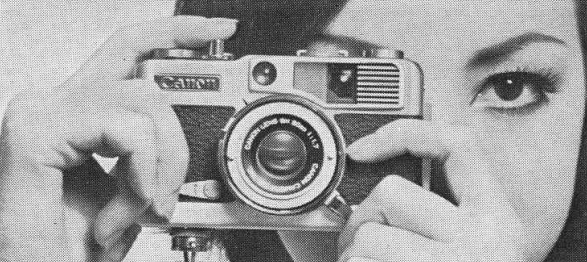Seashore Exposures–Sketch Book Leaves–The Amateur Photographer's Weekly, 1916
The beach can be a harsh environment for cameras and photographers alike. Between sand, salt, water and sunlight, there's any number of things that can cause harm to the camera body or even the human body. B.B. Snowden weighs in with six practical tips for beach photographers in the August 18th, 1916 edition of The Amateur Photographer's Weekly.

SKETCHBOOK LEAVES

 |
| Christina in Red, 1913 Mervyn O'Gorman Medium: Autochrome plate |

SKETCHBOOK LEAVES
Seashore Exposures
by B.B. Snowden
The Amateur Photographer's Weekly
Friday, August 18, 1916
FOR readers who spend their vacations at the shore, there are a few simple pointers which, if carefully observed, will help materially in assuring success.
In the first place, the camera itself should receive especial care. When not in use it should be kept in its case, and it should not be left lying around as one may leave a camera in inland lo calories without great risk. The blistering sun of a hot day at the shore and the penetrating dampness which rolls in from the ocean on a summer evening have power to ruin a good in strument in a very short time. Salt air rusts things quickly, and is generally destructive. Protect your camera from it as much as possible when not in use.
In the second place, it should not be overlooked that the light at the shore is intense, requiring shorter exposures or a smaller stop. One must bear in mind that the light is radiated in every direction, with little or no absorption by dark objects such as all encountered inland. The human eye soon adapts itself to the increased brilliance thus resulting, but the sensitiveness of film or plate remains unchanged. Hence, to prevent over-exposure and consequent flatness of the negative, the aperture of the lens or the length of the exposure must be proportionately reduced. To see what exposure to give, one should have at hand a convenient meter or calculator. If there are still any readers of this page who think that a meter or exposure calculator is a thing for advanced amateurs only, the writer would take occasion to say to them that after many years as an amateur-enough years to make him as good a guess at exposure as anyone else he finds the meter or calculator the only means of insuring success in exposure. Every beginner should get one and form the habit of consulting it before he operates the shutter.
 |
| "A Balancing Feat" B.B. Snowden, 1916 |
In the third place, if you can conveniently do so, by all means take along your developing tank and develop the first roll of film or first dozen plates soon after your arrival. This procedure will tell you whether you are exposing right, thus forestalling failure and insuring technical superiority for the pictures made during the remainder of your stay. If it is not convenient to include the tank in your baggage, take the first roll to the local finisher. In either case you should, of course, have a memorandum of stop and speed for each picture taken. These little precautions may seem too troublesome to bother over on your vacation, but, having inspected a large number of vacation negatives, the writer knows that they are thoroughly worth while. Nothing is quite so disappointing as to come home with several rolls of vacation film and get from them only a few successful negatives.
In the fourth place, don't try to take too big a view. The vacationist at the shore is always impressed and moved by the vastness of the ocean, and it is a natural impulse to try to record this impression. In most cases, however, the order is too large a one for the small hand camera. Greater satisfaction will generally be derived from taking a bit here and a bit there, as would be natural with inland subjects.
In the fifth place, be careful that you do not misjudge distances in focussing with the scale. Distances at the shore look shorter than they really are. Many amateurs make the mistake of setting the pointer at the ten foot mark, when in reality it should be set at the twenty-five-foot mark.
And, lastly, don't forget a color screen for getting clouds.
| 2020 | T C P | www.wideaperture.org |


